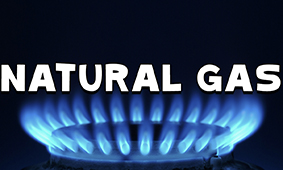
Viewpoint: Permian gas prices may fall in early 2020

Investments in crude drilling in the Permian are slowing down as natural gas supply surges, an ongoing issue as gas infrastructure struggles to meet demand for takeaway. Crude wells in the oil-rich Permian basin, straddling west Texas and southeast New Mexico, produce large amounts of associated gas.
Prices at West Texas' Waha hub are anticipated at $1.211/mmBtu in monthly January business, according to Argus natural gas forward curves, down by 40pc from January 2019's average.
The Waha hub should hover above the $1/mmBtu mark for the first two months of 2020, according to Argus forward curves data, but could fall and perist below it between March-June, depending on weather-related demand, crude production and available pipeline capacity.
Daily prices at the Waha hub hit a five-year low of -$5.23/mmBtu in April. Forward prices are expected to bottom in 2020 for April at an average of about 21¢/mmBtu.
Drilling activity in the Permian basin increased between 2018 and 2019 as producers took advantage of recovering crude prices, but the number of rigs in the Permian has steadily fallen this year. The Permian had 414 rigs about midway through December, a 14pc drop from a year earlier, according to oilfield services provider Baker Hughes.
West Texas Intermediate (WTI) crude prices hit a 12-month low on 27 December 2018 at $44.61/bl, and peaked this year on 23 April at $66.30/bl. The index averaged $56.61/bl over the last 12 months. As the prices of crude drops, the amount of investment and capital possible for rigs and infrastructure in the Permian also shrinks.
As Permian oil and gas well production growth slows, producers who want to keep or increase production levels will need to accelerate their drilling activity, a challenge for those who rely on profitable crude prices.
Another ongoing challenge is constrained pipeline capacity for gas. Even as companies with extensive interstate pipeline networks can take Permian gas east, finding economic capacity is not easy for shippers.
Total Permian gas production reached 16.2 Bcf/d (459mn m³) in November, according to the US Energy Information Administration (EIA). December production is estimated at 16.5 Bcf/d, a monthly increase of about 1.3pc. The Permian accounts for about 19pc of total gas production in the US.
The completion of Kinder Morgan's Gulf Coast Express gave a temporary boost to Permian prices in late September and early October, but once the 2 Bcf/d line reached capacity, prices fell again.
Despite the continuing need for takeaway capacity in the Permian, no new pipeline projects are expected to come online next year. Kinder Morgan announced it would delay completion of its Permian Highway project until early 2021. The pipeline had been scheduled to be in service in the fourth quarter of 2020. The company said the delay was because of slow permitting.
NAmerico Energy Holdings made a similar decision when it announced earlier this year it would push the 2 Bcf/d Pecos Trail pipeline, set to move gas from the Permian to the Gulf Coast, to the middle of 2021. Targa Resources and its partners expect their 2 Bcf/d Whistler pipeline to be in service late 2021 as well.
Slower growth for Permian gas production could eventually lift prices in 2020, but it will do so only with adequate infrastructure for takeaway.
By David Haydon


Trump weighs using $2 billion in CHIPS Act funding for critical minerals

Codelco cuts 2025 copper forecast after El Teniente mine collapse

Electra converts debt, launches $30M raise to jumpstart stalled cobalt refinery

Barrick’s Reko Diq in line for $410M ADB backing

Abcourt readies Sleeping Giant mill to pour first gold since 2014

Nevada army depot to serve as base for first US strategic minerals stockpile

SQM boosts lithium supply plans as prices flick higher

Viridis unveils 200Mt initial reserve for Brazil rare earth project

Tailings could meet much of US critical mineral demand – study

Kyrgyzstan kicks off underground gold mining at Kumtor

Kyrgyzstan kicks off underground gold mining at Kumtor

KoBold Metals granted lithium exploration rights in Congo

Freeport Indonesia to wrap up Gresik plant repairs by early September

Energy Fuels soars on Vulcan Elements partnership

Northern Dynasty sticks to proposal in battle to lift Pebble mine veto

Giustra-backed mining firm teams up with informal miners in Colombia

Critical Metals signs agreement to supply rare earth to US government-funded facility

China extends rare earth controls to imported material

Galan Lithium proceeds with $13M financing for Argentina project

Kyrgyzstan kicks off underground gold mining at Kumtor

Freeport Indonesia to wrap up Gresik plant repairs by early September

Energy Fuels soars on Vulcan Elements partnership

Northern Dynasty sticks to proposal in battle to lift Pebble mine veto

Giustra-backed mining firm teams up with informal miners in Colombia

Critical Metals signs agreement to supply rare earth to US government-funded facility

China extends rare earth controls to imported material

Galan Lithium proceeds with $13M financing for Argentina project

Silver price touches $39 as market weighs rate cut outlook

















